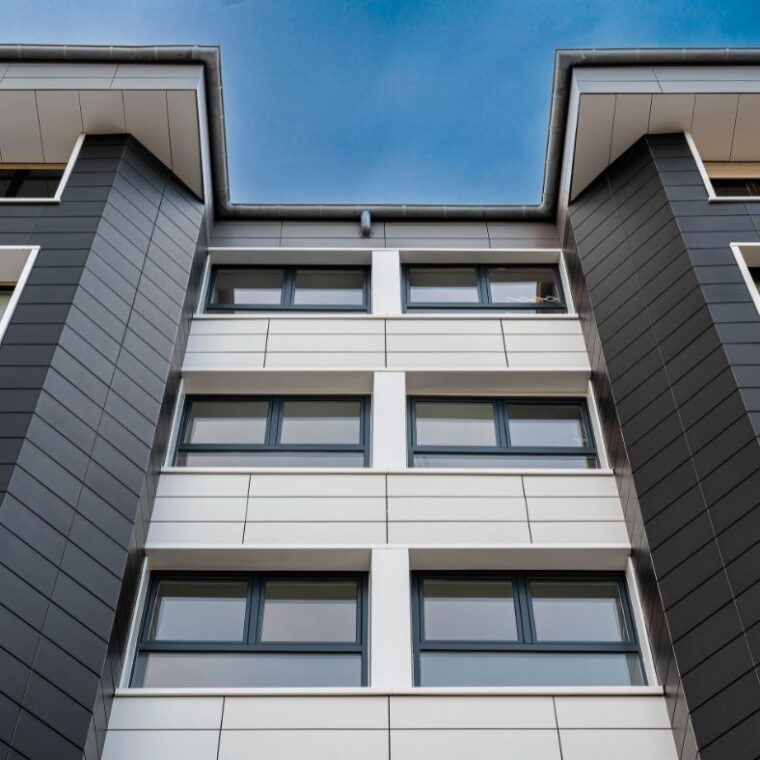10 tips before facade refurbishing
The advantages of renovating the facade of a building are well-known:
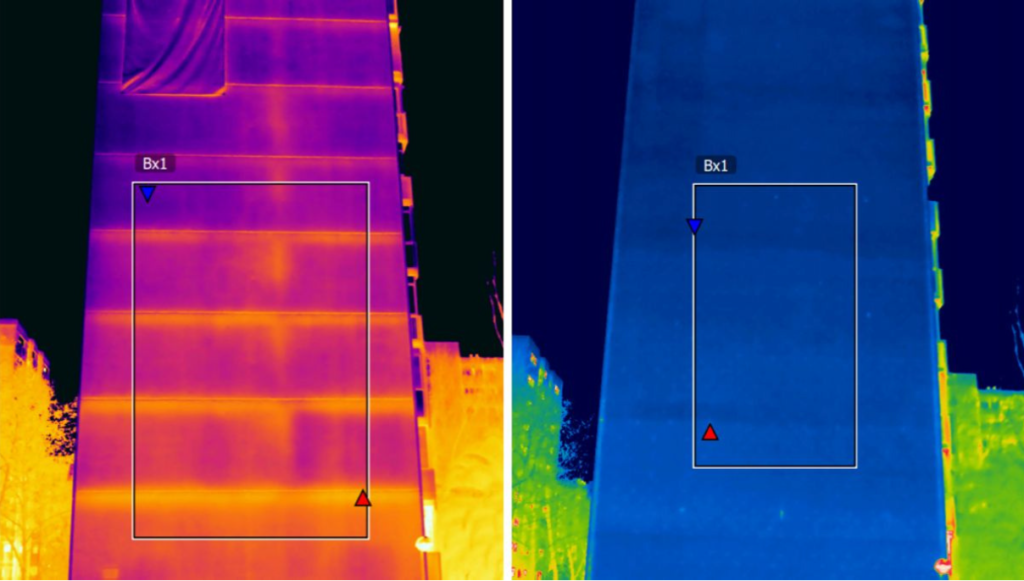
On a functional level, the integration of thermal insulation improvements during facade refurbishing often translates into significant optimizations in the building’s energy efficiency. Consequently, this results in notable savings in the demand for climate control systems, such as heating in winter and air conditioning in summer.
Furthermore, in the case of facade renovation using Faveker® ceramic ventilated facade, the elimination of condensation and the improvement in thermal and acoustic insulation result in increased comfort inside the house.
Esthetically, a renovated facade can completely transform the look of any building and, as a result, the surrounding urban environment in general. Fresh colors, updated textures and a meticulous design can add new visual attraction to the urban landscape, attracting both residents and visitors as well as enhancing the quality of life in the community. Moreover, ceramic is a material with a look that remains unaltered throughout the passing of time as there is no change in color despite any solar radiation it may receive. Thus, transforming the look of a building and its visual attraction increases the property value. Potential buyers often take the outside appearance into account when evaluating property.
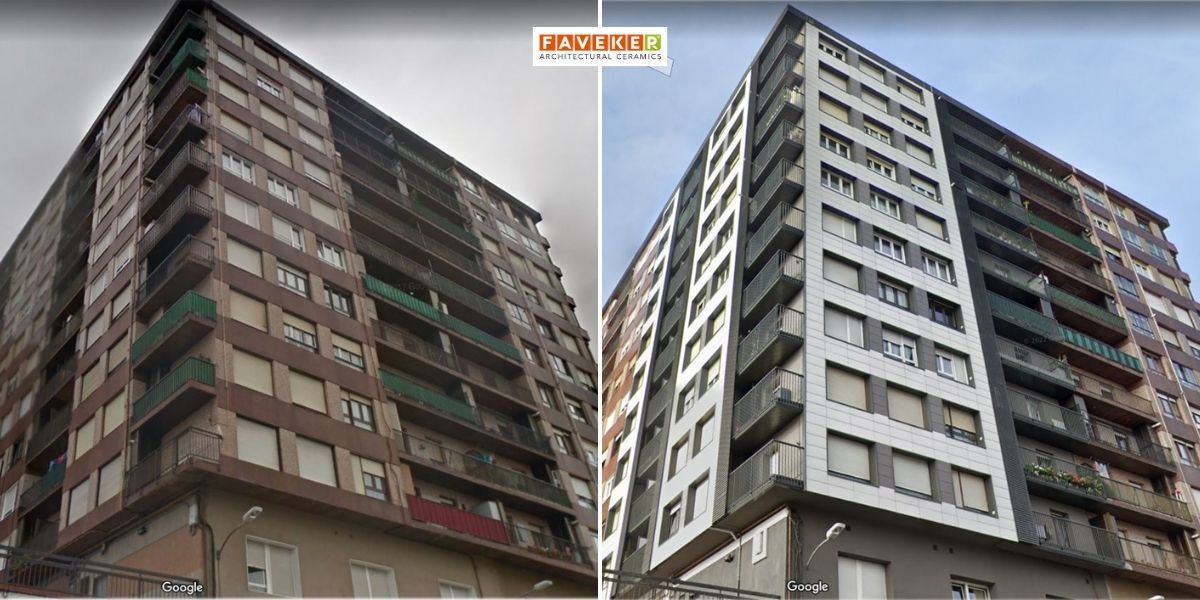
When it comes to renovating commercial buildings, the esthetics are quite important as part of a key strategy for maintaining competitiveness and attracting business. The Grancasa shopping mall in Zaragoza is one example of this, where the GA20 material in black and beige have created a more contemporary look on the outside all while significantly improving the facade insulation. The comprehensive facade renovation project is a continuation of the investment made in 2018 in the new leisure and food service area, providing a balanced look throughout the building.

Structurally, renovating a building facade can provide major benefits as it contributes to the integrity, durability and safety. A facade renovation resolves construction issues (problems such as cracking, corrosion, water damage and weakness in materials…) in addition to preventing future damage which, in the end, extends the useful life of the building. Worn or deteriorated facades can compromise a building’s structural stability. After all, the facade is a building’s first line of defense against atmospheric elements meaning it’s important to give users such guarantees.
Solutions including FAVEKER® ventilated facades are safe against fire, wind and weather as they maintain their technical properties despite the passing of time. This is the result of a careful ceramic production process and meticulous selection and testing of all materials comprising the system. What’s more, Faveker® includes Bioklinker® technology in all of its ceramic pieces for ventilated facades, which prevents the growth of microorganisms, such as fungi and bacteria, that negatively affect the look and durability of a building facade.
Step before renovating an old facade
What is not as well-known to each of us are the steps that need to be taken before carrying out the exterior renovation of the property.
This process is often significant and somewhat more complex than other simpler renovations, such as changing flooring or painting interior and exterior walls.
Facades refurbishing involves various professional trades, and the entire process from start to finish typically takes several weeks. In any case, it is advisable to rely on qualified professionals for each phase, aiming to renovate our facade correctly and avoid future issues.
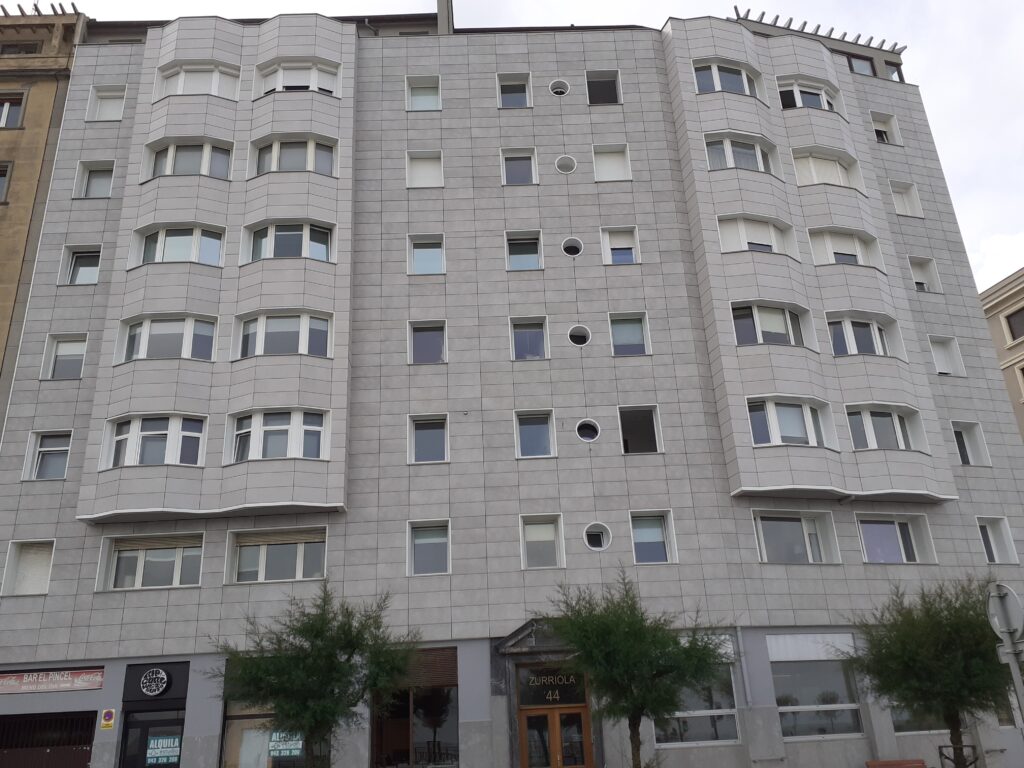
1. Initial Inspection: First and foremost, before commencing any facade renovation work, we must conduct a detailed inspection of the facade to identify issues such as cracks, dampness, structural damage, etc.
To do this, we can seek the support of an architect who, in addition to advising us on this aspect, can also guide us in the selection of materials for the envelope and in the design changes.
In this case, architectural firms can, in turn, collaborate with the technical department of Faveker®, which supports them throughout the process of renovating old facades. This support includes facade modulation, product selection, and monitoring during execution.
2. Regulations and permits: The architect can also assist us with local regulations and necessary permits to consider before facade renovation.
At times, these same architects also act as refurbishing agents. This role involves managing the project from start to finish, beginning with advice on local regulations and coordination with the community of neighbours.
It includes drafting the project, overseeing the construction process, and concluding with the preparation of the necessary documentation to access relevant subsidies. Renovation agents are particularly useful when we want a “turnkey” project where a single professional takes care of everything needed for the documentation, monitoring the renovation work, and coordination with the various professionals involved.
3. Subsidies: In many places, there are subsidy programs and financial assistance to encourage facade refurbishing and improve the energy efficiency of buildings.
These programs are implemented at the local, regional, or national level, and their availability and conditions can vary considerably depending on the location. It is advisable to consult with local authorities and keep track of regional and national programs, typically available for a specified period of time.
With the mentioned assistance of the renovation agent, it will be easier to access this type of public funding for the refurbishing of our home.
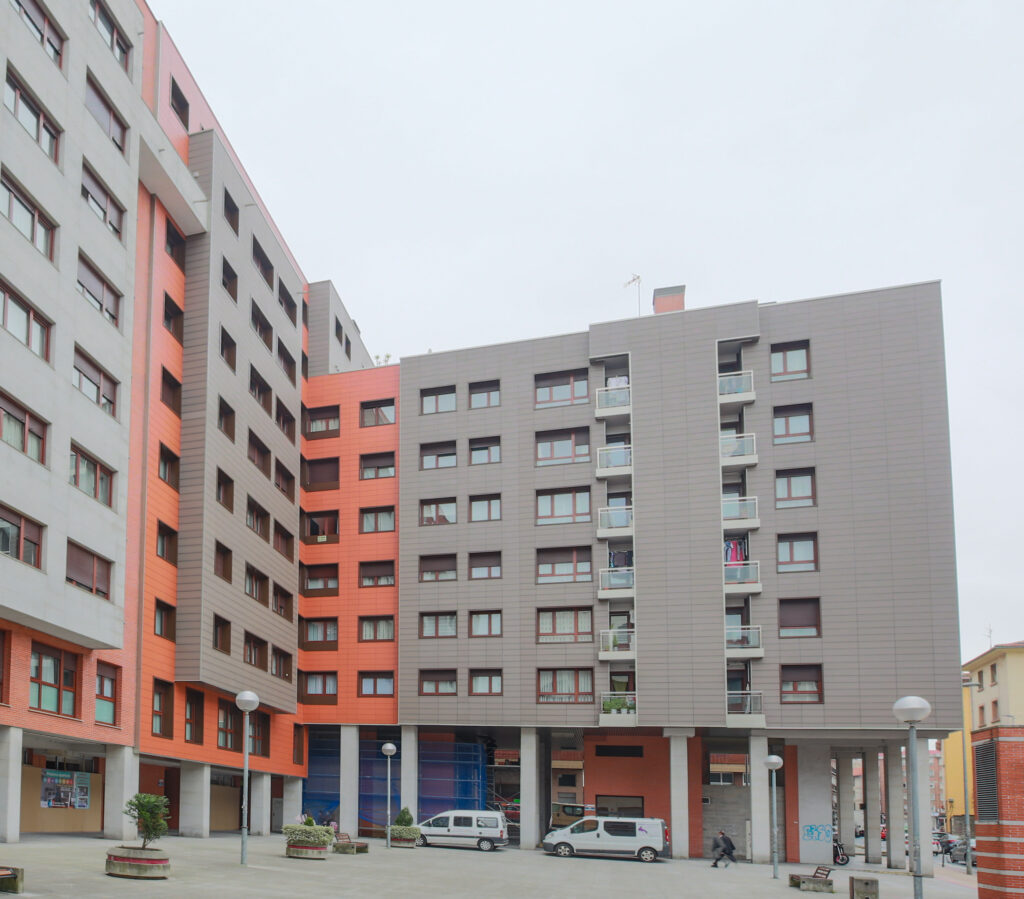
4. Budget: It is crucial to calculate the total amount of the investment we are going to undertake.
Facade renovation goes beyond a change of materials and their installation. Preliminary studies, permits, and potential unforeseen circumstances must also be taken into account to make a cost estimate.
5. Selection of materials: When refurbishing a facade, we desire that both its new appearance and its new properties endure the passage of time.
For this, it is crucial to choose high-quality and durable materials that complement the architectural style of the facade. It is also essential to consider weather-resistant and low-maintenance materials.
The Faveker® ceramic ventilated facade is an example of a resilient solution with infinite aesthetic possibilities and almost zero maintenance.
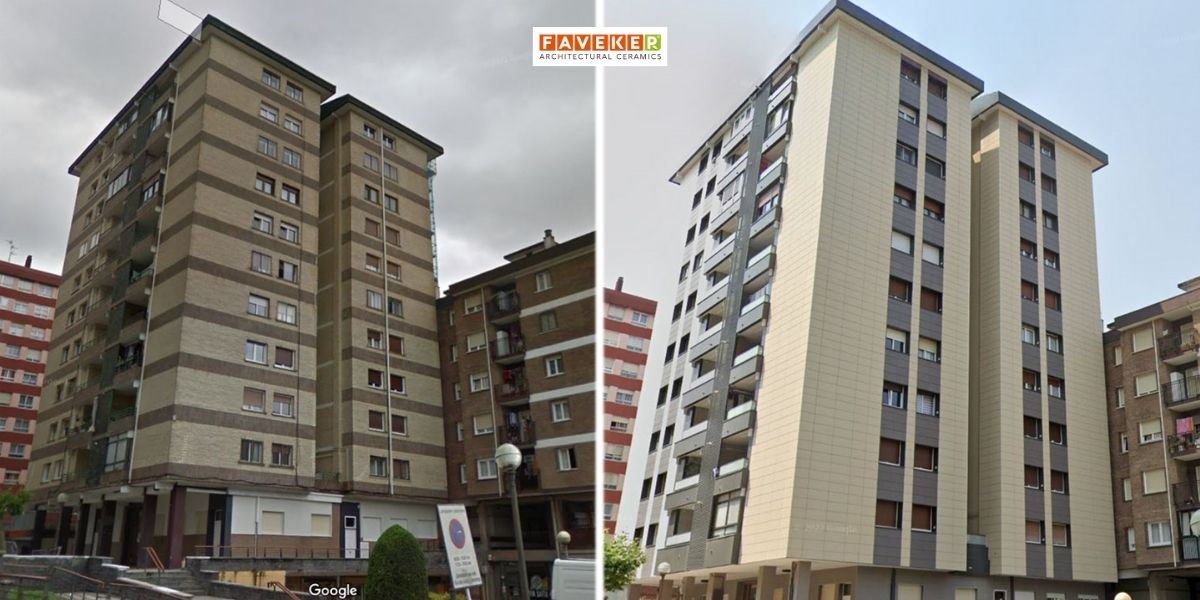
6. Qualified Professionals: As mentioned earlier, the workforce is as important as the material itself.
Therefore, hiring qualified professionals with experience in facade renovation, such as architects, structural engineers, contractors, and specialized installers, will allow us to make the most of our renovation project.
7. Time Planning: We must establish a realistic schedule for facade renovation and allow for contingencies related to factors such as weather conditions and the availability of professionals and materials.
8. Repair of Structural Damages: At times, when studying the aesthetic rehabilitation of our home, we discover structural damages that have appeared over time.
Their repair often entails a cost that we had not initially anticipated, but we must include it in the budget and address it appropriately before proceeding with the exterior intervention. This will prevent these structural damages from affecting the new facade material we install.

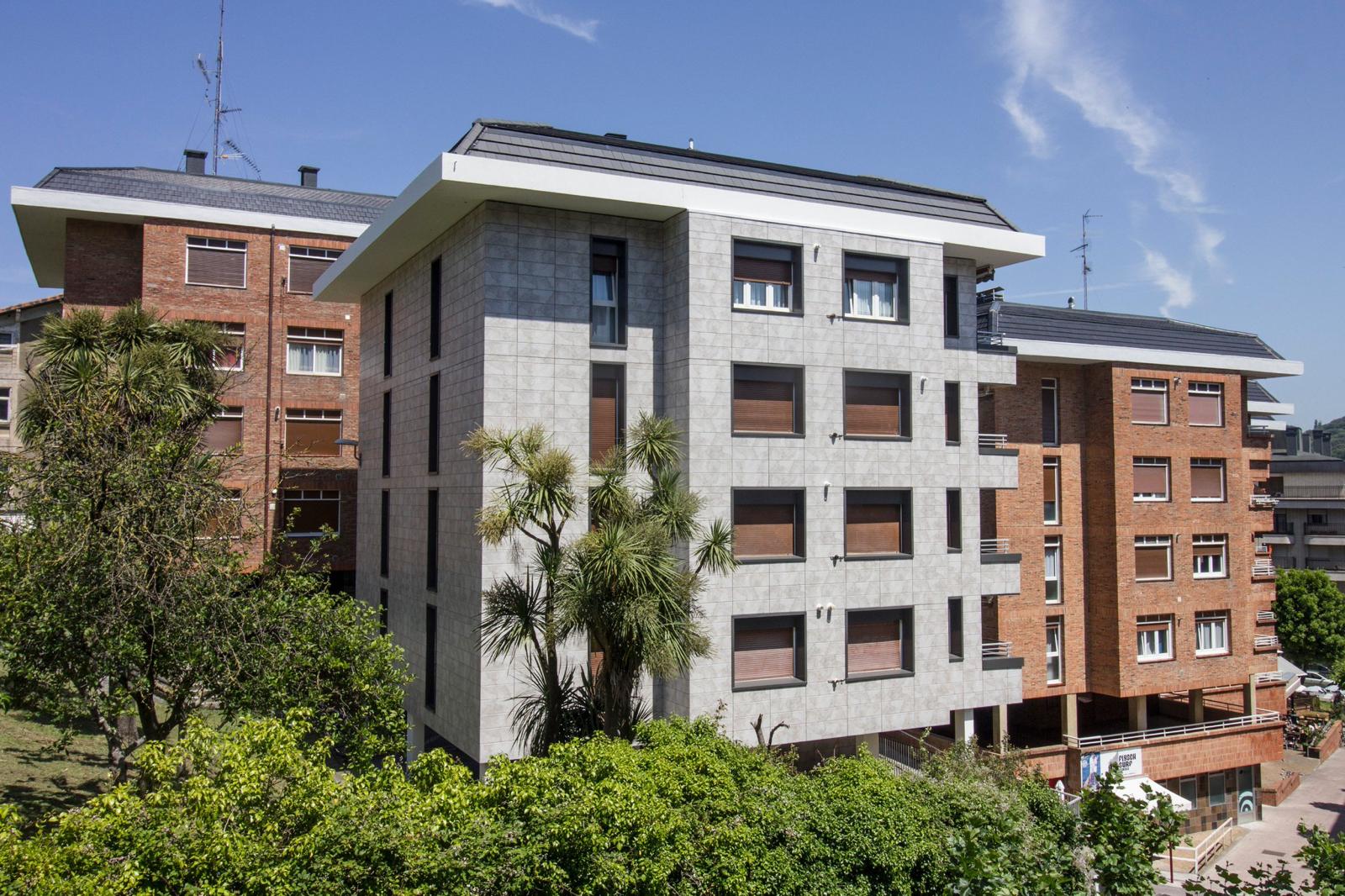
9. Thermal and Acoustic Insulation: Facade renovation is a unique opportunity to implement improvements in thermal and acoustic insulation during the renovation, enhancing energy efficiency and interior comfort.
10. Future Maintenance: Plan and establish a regular maintenance program to ensure that the facade remains in good condition over time.
Materials such as Faveker® ceramic for ventilated facades, with its Bioklinker® antibacterial technology, reduce the need for maintenance to a minimum.
Each facade renovation project is unique, and these steps may vary depending on the specific nature of the facade and project goals.
However, all projects have something in common: reliance on professionals, organized and planned management, and the selection of optimal materials that result in successful outcomes, ensuring that the new design of our facade is durable and timeless.


